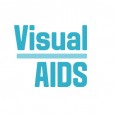
Duane Cramer, Mondo Guerra and Maria Davis are part of the I Design campaign in collaboration with Merck.
Mondo Guerra is an internationally renowned fashion designer and was honored during the Visual AIDS Vanguard Awards in 2013 with the Bill Olander award, named after a founding member of Visual AIDS and given to an artist living with HIV who is making change through their work. In 2010, Mondo courageously revealed his HIV-positive status on Project Runway season eight after he created the challenge-winning print, “Pozitivity,” inspired by his own experience with the virus. When tasked with the challenge to create his own fabric, Mondo took the opportunity to share his HIV positive status through his work by sending a pair of well-fitting pants made in a print of connected positive signs down the runway.
The disclosure came after more than 10 years of personal silence. After winning that episode’s challenge, disclosing his courageous story, and eventually winning Project Runway All-Stars, Guerra has become a highly in-demand designer and an ever-evolving health advocate. He uses his celebrity to draw attention to AIDS charities, and to empower people living with HIV to have a more liberated relationship with their healthcare providers. Guerra has traveled the U.S. as a proud spokesperson for I Design—Merck’s national education campaign, which underscores the importance for people living with HIV/AIDS to talk with their doctors about personal treatment goals.
Read more about Mondo’s art and activism in our Visual AIDS interview.
Visual AIDS: Thinking about the World AIDS Day dress and scarf, it’s exciting to see you drawing inspiration from community and collaboration. What communities do you feel a part of and what inspires you right now?
Mondo Guerra: I feel like I’m part of the conscious community. A community that is thriving in its ideas. A community that learns from the past and knows how to proceed. I’m mostly inspired by getting older and still being able to share my story with intent and not necessarily expectations. And I was very inspired by the HIV community to design the World AIDS Day dress and scarf, as well as other items which are featured on ProjectIDesign.com.
Thinking about how you are working with Duane Cramer for Merck’s I Design, what do you think makes for an important working relationship?
Respect. Duane, myself, and now Maria Davis, deliver our stories as a team on the I Design campaign in collaboration with Merck. I respect the contributions they bring to HIV awareness and education. We are not only colleagues, we are people affected by HIV who come from different backgrounds. I respect the unique perspectives that they bring to the table as African-Americans living with HIV for nearly two decades, and Maria as a mom of two, as well as their artistic talents in photography and music. We are all at a different point in our lives, living with HIV.
Stigma is an ongoing issue for people living with HIV. How do you maintain your voice both as someone living with HIV, and a creative person when faced with situations where you could be silenced or discriminated against?
As a creative person, I constantly second guess my ideas about who I am as a designer and what people expect from me as a product of my creative mind. But, I also feel that fear can dilute the confidence to challenge not only one’s self but the “audience.” As a person living with HIV, I try my best to never use the “S” word. I had been silenced for years, not only because of my own ideas about who I am as an HIV positive person, but also from the contributing commentary of other sources--whether it was through media or a family member. I constantly think about how we can approach that silence and discrimination with understanding and positivity. That is why I joined the I Design campaign--to shine a light on HIV and drive conversations across the country. Through I Design, I’ve had the opportunity to reach people living with HIV directly and help encourage them to be vocal about how they are doing and feeling on their treatment with their healthcare team.
At the Visual AIDS Vanguard Awards, you and legendary activist Ann Northrop hit it off. How important are intergenerational relationships to you as an artist and someone living with HIV?
I think that it is very important. I feel like there is a generation gap that holds us back from working together, from pushing on together. It’s important to share our stories with each other and have open communication on how we are affected as people living with HIV. Whether you were infected with HIV in 1983 or yesterday, the moment you are diagnosed as HIV positive--that emotion, I believe, is universal. Our stories are strength and we need to share them. As a creative, I am lucky to be able to have cross-over from my design studio into my activism, by sharing visual conversations that support an important cause.
As a designer there is often a lot of pressure to make, make, make. How do you deal with stress?
I make, make, make choices. That’s all we do. Whether good or bad, we continue to make. As a creative person, I am a problem solver. I can only deal with stress knowing I have a good heart.
Mondo Guerra is a Denver-based designer who first endeared himself to an international audience in 2010 on Lifetime’s Project Runway season 8, and returned to television in January 2012, winning Project Runway All Stars. His innovative style and bold designs have captured the imagination of the fashion world. In addition to his remarkable success on Project Runway, audiences rallied in support of Mondo following the emotional disclosure of his HIV-positive status on the show. Since his disclosure, Mondo has become vigorous advocate for HIV/AIDS awareness.








Comments
Comments